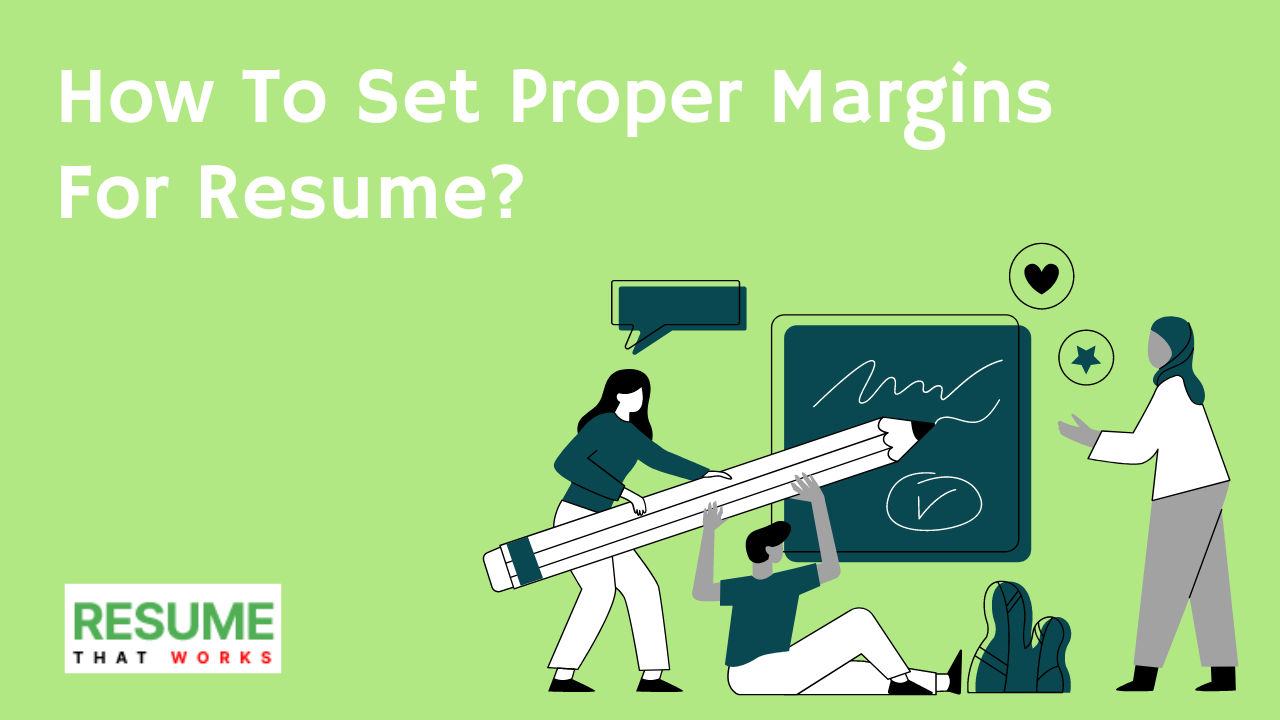Although LinkedIn profiles and online dynamic portfolios are considered to be the most relevant in this day and age, the importance of good old-fashioned resumes has not waned entirely. In this day and age, they are still considered to be a vital part of the recruitment and selection processes.
In all its shapes and forms, people spend a lot of time and effort in fine-tuning them and making them appealing to the hiring managers. It is often the first and formal introduction of a candidate and needs to stand out from the rest of the aspirants.
That’s why there are so many companies and platforms that help people with the nuances of their resumes and CVs.
In this article, we will be discussing a very specific aspect of a resume – margins. We will shed ample light on;
- Why resume margins matter
- Standard resume margins
- Guide on how to adjust margin size for resume
- Custom resumes and application tracking systems
Why Margin Size For Resume Matters
A resume is nothing but a summary of a professional’s credentials considering their academic qualifications, experience, skills, and so on. People compete on these premises when they apply for the same job. That’s why it is hard to imagine sweating over something as worthless as resume margins.
Contrary to this, they play an important role in giving an appealing aesthetic and looking at the resumes of the aspirants. If someone has ever wondered about making a solid first impression during a job competition – which matters a lot – then the importance of resume margins can never be downplayed.
What Are Standard Resume Margins
After going through the importance of resume margins in the modern recruitment and hiring process, it is necessary to discuss the standard resume margin sizes.
At the broadest level, 1” resume margins are considered to be standard in modern firms. Lucky for aspirants and the reason they don’t care about it much is that this is the default margin size in MS Word – the most commonly used word processor across the globe.
Another reason why this aspect of resume writing may slip through the cracks is extra attention to the content of the resume. Aspirants need to stand out from the rest of the competition so they divert their time and energy to perfecting professional summary, academic qualifications, experience, skills, etc.
Still, taking care of the standard margin system on a resume can tell recruiters that a candidate is serious and considerate enough not to omit the minutest of the details.
The rationale behind 1” margins for resumes is to make them proportionate – neither too wide nor too narrow. Another of saying that is balancing the “white” on a resume.
If it is too wide, then the CV would seem emptier. If it is too narrow, it will make the resume too stuffed with content with no room for breath.
What Should Be The Margins On A Resume
Depending on the professional level of an aspirant and other factors, it is safe to say that 1” margins truly capture the essence of the practice.
For instance, if a fresh graduate from college wants to apply and compete for a job, the lack of professional years and experience would not make the resume look bland and empty. By adding professional summary, academic qualifications, special skills, and certifications, the fresh graduates would become successful in appropriately filling the paper.
And herein lies a possible exception to this rule!
In the case of an experienced professional who has a lot of information to incorporate into one piece of paper, it is necessary to make amendments to the standard system. Similarly, if a candidate has years of experience and also applying for a managerial or an executive position, then he may have to add extra pages to the resume to house all the information. That’s why it is necessary to amend margins for resumes.
Again, finding the middle ground between narrow and wide margin sizes is the end goal here. Experts put the margin too narrow beyond 1/2” and too wide beyond 1”.
Another thing that makes it necessary for job seekers to pay extra attention to the margins of resumes is that they play a key role in determining the eligibility of candidates through Application Tracking Systems (ATS).
That’s the reason candidates should pay extra heed to the aesthetics and formatting of their resumes before turning them in.
A Guide To Set Margin Size For Resume
The whole idea behind writing and submitting a resume is to have a standing chance for a job against the competition. The most basic thing regarding a resume is that it should be well-formatted according to the general standards of the industry.
This is also evidenced by the dire reality of the situation as many candidates do not fall short in the competition because they are less qualified when compared to their competitors. In most cases, it is because they left out small but necessary details in their resumes.
In this light, this section will guide aspirants in setting margins in their resumes, both in Google Docs and Microsoft Word.
Via Google Docs
Google Docs is one of the most popular and widely-used word processors in the world. It is popular because of its simple UI, clean aesthetics, and auto-saving feature.
If you are editing or rewriting your resume to submit it for the dream job, it is a solid choice to make necessary amends.
Here is a guide to adjusting resume margins in Google Docs:
- Open your resume file in Google Docs
- Go to “File” and select “Page Setup”
- A pop-up window will appear that will display options for page layout
- Fortunately, all Google Docs metrics are set to American English which means the figures will appear with inches.
- Change the figures from there and you are all set.
Sometimes, candidates need to change the margins of a specific paragraph or portion of the resume. For that;
- Place the cursor at the start of the margin
- Go to the margin ruler at the top of the page and move the blue triangle
- Leave the grey part of the rule as it is
Via MS Word
In Microsoft Word, the resume template comes with default 1” margins. So, if you are sticking to the industry standards, there is no need to tinker with that.
Still, there is an option available to deal with the issue if you want to add more information.
- Go to “Page Layout” and select “Margins”
- The default options offer 1” margins on each side of the page
- The “Narrow” option gives around 1/2” of margins around the page
- There is also a custom option to adjust margins accordingly
MS Word offers exceptional value and control in terms of customizing the resume page and layout.
Pro Tip: It is absolutely fine to go narrower if you have extensive information to put in the resume. But on the wider side, it is best to consider 1” as the widest threshold of resume margins.
Creative Resumes & Tracking Systems
Many candidates have a knack for creativity. They go about changing different aspects of the resume to help them stand out from the rest of the candidates.
Most of the creative elements used in a CV or a resume are as follows:
- Extensive usage of colors and graphs
- Drastic changes in page layout
- Other aesthetics changed to make it appealing and stand out from the rest of the applicants
There is no denying that modifying a CV or a resume shows that candidates have put in a lot of time and effort to stand apart but it does not help the hiring managers. In most cases, it becomes too hard for them to scan through resumes in seconds to gauge the candidature of aspirants.
Speaking of facilitating hiring managers, application tracking systems are often used by companies to sift through the sea of applications and resumes. ATSs rely on the structure and keywords of the job description in the resume to shortlist candidates.
The important thing to remember here is that creative resumes do not make the final cut in current application tracking systems.
So, aspirants should stay on the premises of standard rules to improve their odds of selection.
Concluding Remarks
Resumes are still going strong even with online and offline alternatives. These are extremely helpful for candidates to make a point before a hiring manager. That’s why it is necessary to take care of resumes in terms of solid content and appropriate formatting.
This article has shed ample light on the structure and technical nuances of the resume margins. For readers, it may seem a trivial part of the whole, but in reality, it is anything but.
Having standard margins around the resume ensures that CVs cannot only pass the humans’ bird’s eye view but also do well in the automatic mechanisms – Application Tracking Systems.
So, make sure you go through the article in detail before turning in your resume for your dream job!




